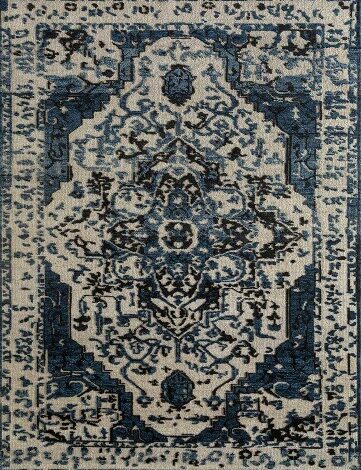Unveiling the Elegance: A Deep Dive into Persian Rugs

In the world of interior design, few elements possess the timeless allure and cultural richness of Persian rugs. These intricately crafted masterpieces have been weaving tales of artistry and tradition for centuries, gracing homes with their unparalleled beauty and craftsmanship. Join us on a journey as we unravel the mystique of Persian rugs, exploring their history, designs, and the artistry behind each knot.
Origins and Ancient Artistry
Persian rugs, also known as Iranian carpets, have a history that dates back thousands of years. The art of rug weaving in Persia can be traced to ancient times, with evidence suggesting that it predates the advent of Islam in the region. The nomadic tribes and skilled artisans of Persia wove intricate patterns and motifs into their rugs, reflecting the diverse cultural influences of the time.
Evolution through Dynasties
As Persian civilization flourished, so did the art of rug making. Each Persian dynasty, from the Safavids to the Qajars, left its indelible mark on rug design and craftsmanship. The Safavids, in particular, are credited with elevating Persian rugs to the status of coveted treasures, introducing new techniques and designs that continue to influence rug production to this day.
Persian Rug Designs: A Kaleidoscope of Patterns
Floral Fantasia: One of the most iconic and enduring designs in Persian rugs is the floral pattern. Inspired by the lush landscapes of Persia, these rugs feature intricate depictions of flowers, vines, and botanical elements. The floral motifs often symbolize themes of life, growth, and rebirth, creating a harmonious blend of nature and artistry.
Geometric Grandeur: Geometric patterns in Persian rugs showcase remarkable precision in design. Intricate tessellations, medallions, and geometric motifs are meticulously woven into the fabric, creating a sense of symmetry and order. These designs often symbolize cosmic elements, spirituality, and the interconnectedness of life.
Narrative Nomadism: Nomadic tribes in Persia wove rugs that served not only as functional pieces but also as storytellers. Nomadic rug designs often feature symbolic motifs that convey tales of the weavers’ lives, journeys, and cultural identity. The narratives are expressed through the use of symbols like animals, tribal emblems, and even scenes from daily life.
The Art of Persian Rug Making
Hand-Knotting Mastery: Central to the creation of Persian rugs is the ancient art of hand-knotting. Iconic Rugs spend countless hours tying individual knots, creating a dense and durable carpet. The quality of a Persian rug is often measured by the number of knots per square inch, with higher knot counts indicating a finer and more intricate rug.
Natural Dyes and Materials: The vibrant and enduring colors of Persian rugs are achieved through the use of natural dyes extracted from plants, insects, and minerals. This traditional approach not only produces rich, nuanced colors but also ensures the longevity of the rug. The use of high-quality wool, silk, or a blend of both adds to the durability and luxurious feel of Persian rugs.
Generational Craftsmanship: The art of rug making in Persia is often a family tradition passed down through generations. Young apprentices learn the intricate techniques and patterns from seasoned artisans, preserving the cultural heritage and ensuring the continuation of this ancient craft. The intergenerational transfer of knowledge is a testament to the deep-rooted significance of rug weaving in Persian culture.
Investing in Timeless Beauty
Cultural Significance: Beyond their aesthetic appeal, Persian rugs hold immense cultural significance. They are often considered works of art that transcend time, representing the heritage, craftsmanship, and artistic expression of the Iranian people. Owning a Persian rug is not just an investment in décor; it is a connection to centuries of tradition and artistry.
Value Appreciation: Due to their meticulous craftsmanship and enduring quality, Persian rugs have become coveted collectors’ items. Many connoisseurs and investors recognize the value of these rugs as assets that appreciate over time. The rarity of certain designs, combined with the labor-intensive nature of hand-knotting, contributes to the increasing value of well-preserved Persian rugs.
Caring for Your Persian Treasure
- Gentle Cleaning Practices: Preserving the beauty and integrity of a Persian rug requires careful maintenance. Regular vacuuming and gentle spot cleaning can help prevent dirt and stains from settling into the fibers. Professional cleaning services specializing in delicate rugs are also recommended to ensure a thorough yet gentle cleaning process.
- Avoiding Sun Exposure: While Persian rugs are known for their resilience, prolonged exposure to direct sunlight can fade the vibrant colors over time. Placing the rug in a location that minimizes exposure to harsh sunlight preserves its beauty and ensures that it remains a focal point of your interior space.
Conclusion
In the world of interior design, Persian rugs stand as a testament to the enduring marriage of art and craftsmanship. These exquisite creations, steeped in history and cultural significance, have the power to transform a space into a haven of elegance. Whether you are drawn to the floral splendor, geometric precision, or nomadic narratives, a Persian rug is more than a floor covering—it is a timeless work of art that weaves the threads of tradition into the fabric of your home. Embrace the beauty, invest in the legacy, and let the allure of Persian rugs grace your living space for generations to come.



